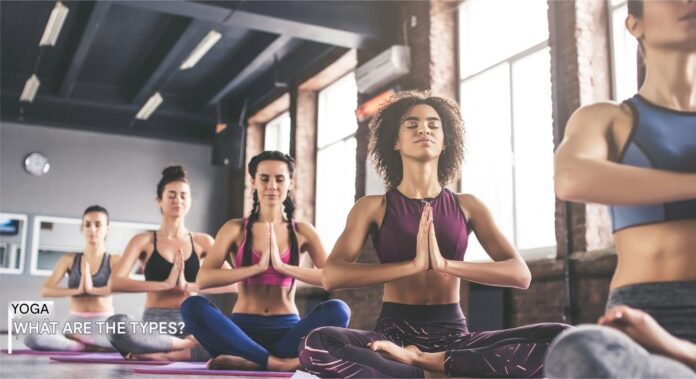Yoga is an ancient discipline that fosters harmony between body and mind. Today, yoga is preferred for physical health, stress management, and spiritual balance, and it encompasses a wide variety of practices. Whether you’re considering yoga for the first time or want to try a new style, we’ll explain everything you need to know about its various types and benefits.
The Most Common Types of Yoga
Yoga styles vary depending on a person’s expectations and physical capacity. Some prefer a more active and dynamic flow, while others prefer a more meditative and relaxing practice. Here are the most common types of yoga:
Hatha Yoga
Hatha Yoga is one of the most suitable yoga styles for beginners. This practice offers a way to balance the body and mind. By focusing on poses (asanas) for extended periods, Hatha Yoga increases flexibility and awareness. Breathing techniques and meditation also play a significant role in this process. The primary goal of Hatha Yoga is to support physical and mental health. In addition to flexibility and strength, it also fosters mental calmness. Therefore, it’s a great starting point for those who want to explore the practical aspects of yoga. Hatha Yoga is suitable for practitioners of all levels and helps individuals understand their own bodies.
Vinyasa Yoga
Vinyasa Yoga is flow-based, and this experience offers a dynamic aspect of yoga practice. Poses are performed in a series, synchronized with the breath, ensuring that every movement of the body occurs in harmony with a deep breath. It’s ideal for those who enjoy sweating or are looking for a slightly more active practice.
Vinyasa not only strengthens the body but also brings mental relaxation and serenity. The magic of Vinyasa Yoga lies in the uniqueness of each flow and the freedom participants have to move according to their own breathing rhythm. This offers a rich opportunity for personal growth and discovery. Vinyasa practice helps participants express themselves and develop a deeper connection with their bodies.
Yin Yoga
Yin Yoga, a slow-paced, meditative form of yoga, is an ideal method for achieving mental and physical balance. This yoga practice is characterized by holding poses for extended periods (3-5 minutes). This practice works on the body’s deep connective tissues, increasing flexibility and reducing tension.
Yin Yoga is particularly beneficial for those experiencing intense stress. This practice calms the mind and reaches deep within the body, providing relaxation. Performed slowly and mindfully, these poses offer a great opportunity for both physical and mental relaxation.
Ashtanga Yoga
Ashtanga Yoga consists of poses practiced in a specific order, which distinguishes it from other forms of yoga. Each pose is linked to the previous one, and this order ensures a disciplined progression of the practice. Its disciplined structure helps deepen the practice. Ashtanga Yoga offers a physical and mental journey, aiming not only for physical but also for spiritual growth.
It can be quite physically demanding, so it’s important for participants to be patient and committed. Ashtanga Yoga is a form of yoga frequently preferred by those seeking strength and flexibility, making it popular among athletes and fitness enthusiasts. With regular practice, the body gains both endurance and flexibility.
Restorative Yoga
Restorative Yoga is a yoga style based entirely on “rest.” It helps the body enter a deep state of relaxation and rejuvenation. Supportive equipment such as bolsters, blankets, and blocks are used during sessions. This ensures correct posture and reduces stress in the body.
One of the most significant benefits of Restorative Yoga is its profound meditative effect. This allows the mind to escape the stress and anxiety of daily life, leading to a more peaceful state. It is particularly suitable for those experiencing insomnia; with regular practice, it can improve sleep quality and promote a deeper sleep experience throughout the night.
Yoga is a unique journey that balances the body, mind, and spirit. With different yoga styles, you can tailor this journey to your specific needs. Whether you’re looking to strengthen, relax, or gain mental clarity, yoga offers this opportunity. You can start with a yoga mat and a little passion, and in no time, you can make a huge difference in your life.
Things to Consider When Doing Yoga
Just like any other form of exercise, yoga requires a warm-up. Preparing your body with light stretches will make your practice more effective. While one of the biggest motivations in yoga is to progress, remember that every body has its limits. You should feel stretching, not pain, during the poses. This is an important part of listening to your body and prioritizing your health.
Regularizing your practice accelerates your progress. Short practices several times a week are more effective than infrequent but longer sessions. This can increase your flexibility and strengthen your mental focus. During yoga, practicing in a quiet, distraction-free area helps you focus.
Using a non-slip, comfortable, and supportive yoga mat not only increases your safety during practice but also provides an enjoyable experience. The right equipment and a suitable environment make your yoga practice more enjoyable.
Which Type of Yoga is Right for You?
In light of all this information, if you are still wondering, “Which type of yoga is right for me?”, let us offer a little guide:
- Beginners who want to increase their flexibility: Hatha Yoga
- Those looking for an energetic practice: Vinyasa Yoga
- Those who need deep rest of mind and body: Yin or Restorative Yoga
- Those seeking more strength and discipline: Ashtanga Yoga
- Those with limited time but wanting effective practice: Short Hatha or Yin sessions of 15-20 minutes
Regular yoga practice brings not only physical transformation but also emotional and mental transformation. While you might initially start simply for stretching or back pain relief, over time, you’ll begin to pursue inner peace. When combined with meditation, breathing exercises, and mindfulness practices, yoga becomes a haven from the stresses of daily life.



